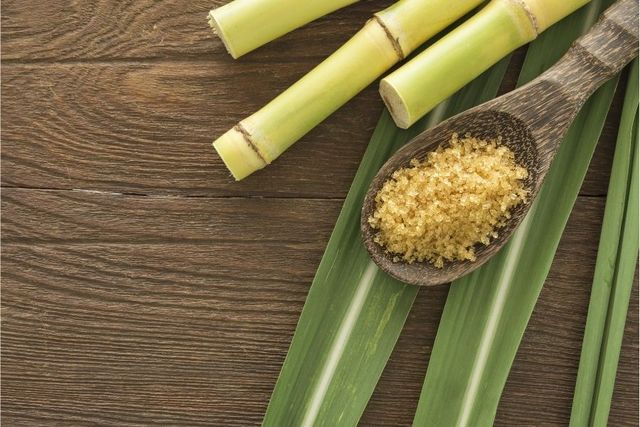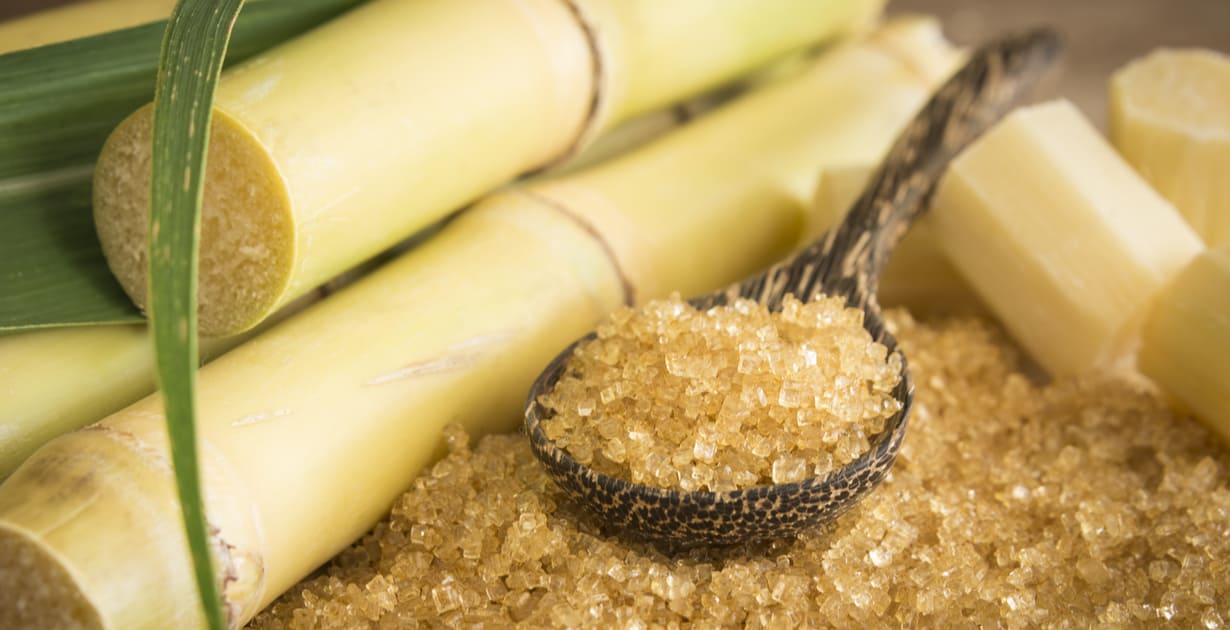All About Sugar Canes: What Are Sugar Canes Made Use Of For and Their Function in Worldwide Agriculture?
Sugar walking sticks act as a foundation of worldwide agriculture, largely recognized for their function in sugar production. They additionally add to the development of byproducts like molasses and ethanol. These facets not only support numerous sectors yet additionally effect financial security in country regions. The growing of sugar walking canes deals with substantial ecological difficulties. Understanding their diverse duty prompts further expedition into their agricultural methods and sustainability initiatives.
The Agricultural Process of Sugar Walking Stick Farming
Although sugar walking cane farming may differ by region, the essential farming process stays regular. The primary step involves selecting high-yielding selections ideal for neighborhood climates. Prep work of the soil is important, often calling for tillage and the enhancement of fertilizers to boost fertility. Growing commonly occurs during the rainy period, with farmers utilizing either whole stalks or cuttings to develop brand-new crops.As the plants expand, they need attentive treatment, including weed control, insect management, and watering, depending upon the ecological problems. Farmers keep an eye on the sugar cane's growth cycle, which normally extends 10 to 24 months, prior to harvesting. Harvesting is labor-intensive, frequently carried out manually or with specialized machinery, making certain very little damages to the stalks. Adhering to harvest, the cane is delivered to refining centers. This meticulous cultivation process not only supports neighborhood economic situations however additionally plays a significant duty in global agricultural methods, adding to food and power materials.
Sugar Production: From Walking Stick to Crystal
The journey of sugar production begins the minute fresh collected sugar cane gets to refining centers. The initial action involves washing and chopping the walking stick to prepare it for extraction. Making use of high-pressure rollers, the juice is extracted from the smashed cane, causing a sweet liquid recognized as sugarcane juice. This juice undertakes explanation, where impurities are removed via the enhancement of lime and heat.Next, the clarified juice is focused by steaming it down to produce a thick syrup. This syrup is after that taken shape by cooling down, making it possible for sugar crystals to form. The crystallized sugar is divided from the remaining syrup, known as molasses, via centrifugation.Finally, the sugar crystals are cleaned and dried out, leading to the acquainted granulated sugar (What Are Sugar Canes Used For). This process transforms raw sugar cane into a product that is essential to various culinary and commercial applications, highlighting the relevance of sugar in worldwide agriculture
Biofuels and Sugar Canes: A Sustainable Future
As the globe increasingly seeks sustainable energy options, sugar walking sticks have actually arised as a promising resource for biofuels. The biomass stemmed from sugar walking sticks can be exchanged ethanol, a renewable fuel alternative that noticeably minimizes greenhouse gas discharges compared to nonrenewable fuel sources. This process not just supplies a cleaner power source but additionally advertises power freedom for numerous countries.In enhancement, sugar walking cane growing supports rural economic situations by creating tasks in both farming and biofuel manufacturing fields. Making use of sugar walking sticks for biofuel manufacturing additionally urges agricultural diversification, which can improve soil wellness and reduce dependency on single crops. The by-products of sugar walking stick processing can be made use of for electricity generation, additionally adding to a lasting energy cycle. As nations endeavor to meet sustainable energy targets, sugar walking canes are poised to play a vital role in shaping an extra lasting future in the biofuel landscape.

The Role of Sugar Canes in Drink Manufacturing
Sugar canes play a significant function in drink production, functioning as a main active ingredient in rum and contributing to the sweetness of several sodas. In addition, their natural juices are utilized in different drinks, improving flavor and charm. This flexibility highlights the value of sugar walking canes in the international beverage industry.
Sugar Walking Stick in Rum
Rum production is delicately linked to the farming of sugar walking stick, an important plant that provides the essential fermentable sugars required for fermentation. This process starts with the extraction of juice from gathered sugar walking sticks, which is after that either fermented straight or refined right into molasses. Yeast is included in convert the sugars into alcohol, leading to a varied variety of rum styles, from light to dark selections. The geographical region where the sugar walking cane is grown significantly affects the flavor account of the rum, with elements such as dirt type and environment having fun vital duties. Nations like Barbados, Jamaica, and Cuba are renowned for their rum manufacturing, reflecting the historical and social value of sugar walking cane within the international drink industry.
Soft Drinks Sweetener Source

All-natural Juice Manufacturing Uses
Along with its considerable function in soft drink manufacturing, sugar walking cane is additionally critical in the natural juice industry. The juice extracted from sugar cane, called cane juice, is commemorated for its natural sweet taste and unique taste profile. This juice is commonly consumed fresh in different regions, specifically in tropical countries, where it is enjoyed as a rejuvenating drink. Furthermore, cane juice works as a base ingredient in a range of all-natural fruit juices and smoothies, enhancing both preference and nutritional value. Its all-natural buildings make it an attractive option to sweetening agents, appealing to health-conscious customers. On the whole, sugar walking cane's adaptability in juice manufacturing underscores its value in modern drink offerings worldwide.
Advancements in Sugar Cane Byproducts
Innovations in sugar walking cane by-products are leading the means for sustainable remedies in numerous markets. Biofuels obtained from sugar walking cane offer an alternative energy source, while advancements in lasting product packaging are decreasing dependence on traditional materials. These advancements highlight the convenience and capacity of sugar cane past its primary use in drink production.
Biofuels From Sugar Walking Cane
Exactly how can the results of sugar cane add to sustainable energy remedies? The conversion of sugar cane into biofuels offers a promising method for renewable power. By utilizing the fibrous deposit, referred to as bagasse, producers can create bioethanol through fermentation processes. This bioethanol can work as a lasting option to fossil fuels, reducing greenhouse gas discharges and dependence on non-renewable sources. In addition, molasses, one more by-product, can be fermented to generate biofuels, making best use of resource performance. The power created from sugar walking cane not just gives a cleaner fuel source but likewise improves the total economic practicality of sugar manufacturing. By integrating biofuel manufacturing into their operations, sugar cane industries can play a crucial role ahead of time lasting power services internationally.
Sustainable Packaging Solutions
Sustainable packaging solutions are increasingly being created from sugar walking stick by-products, showcasing the versatility of this farming staple. Innovations such as eco-friendly plastics originated from bagasse, the coarse deposit left after juice removal, are acquiring traction. These materials provide an environmentally friendly alternative to traditional plastics, decreasing dependence on nonrenewable fuel sources and decreasing carbon impacts. Additionally, sugar cane-based packaging is compostable, breaking down normally without damaging the atmosphere. Firms are now exploring these options to align with consumer need for sustainability. As recognition of plastic contamination grows, the adoption of sugar cane-derived packaging is anticipated to increase, placing sugar canes as a key hop over to here player in the shift to greener product packaging options in different industries.
Economic Effect of Sugar Walking Stick Farming

Although sugar walking cane farming has deep origins in numerous economic situations, its economic impact extends far beyond farming production. my explanation This crop functions as a significant income source for millions of farmers worldwide, particularly in developing countries where agriculture is a primary livelihood. Sugar walking cane adds to regional economic climates through job development in growing, harvesting, and processing. The market likewise promotes growth in relevant fields such as transportation, equipment manufacturing, and food processing.Furthermore, sugar cane is a principal in worldwide profession, affecting global markets and prices. Nations that create sugar walking stick often rely upon exports to enhance their financial stability. The by-products of sugar walking cane, such as ethanol and molasses, expand earnings streams for farmers and add value to the agricultural industry. Generally, the financial ramifications of sugar walking cane farming are extensive, affecting not just farmers however likewise national economic situations and whole neighborhoods.
Environmental Factors To Consider in Sugar Cane Farming
While sugar walking stick farming plays an essential function in many economic climates, it additionally raises considerable ecological worries that can not be neglected. The extensive usage of fertilizers and pesticides in sugar walking stick farming typically causes soil degradation and water pollution. Runoff from these chemicals can pollute nearby water bodies, damaging marine ecosystems. In addition, the monoculture techniques widespread in sugar walking cane farming decrease biodiversity, making environments more at risk to bugs and diseases.Deforestation is one more important problem, as land is commonly removed to give way for sugar vineyards, bring about environment loss for wild animals and raised carbon emissions. The high water intake required for sugar walking stick watering can stress regional water sources, especially in arid areas. As worldwide demand for sugar proceeds to increase, addressing these ecological challenges becomes critical to assure lasting techniques in sugar walking stick cultivation.
Often Asked Concerns
What Are the Nutritional Benefits of Sugar Walking Stick?
The dietary benefits of sugar walking cane primarily include its high carbohydrate content, offering energy. In addition, it includes vitamins, minerals, and antioxidants that might sustain general health, though small amounts is important because of its sugar content.
Just How Does Sugar Walking Cane Affect Resident Ecosystems?
Sugar walking cane farming can greatly influence regional communities by modifying land usage, affecting biodiversity, and needing considerable water sources. In addition, it may lead to dirt degradation and pesticide drainage, interfering with bordering environments and wildlife populations.
What Is the History of Sugar Walking Cane Cultivation?

Exist Alternatives to Sugar Walking Stick for Sugar Production?
Alternatives to sugar walking cane for sugar manufacturing include sugar beetroots, corn, and different tropical plants like sorghum and agave (What Are Sugar Canes Used For). These plants supply diverse resources of sweet taste, each with unique farming requirements and environmental effects
How Do Climate Patterns Impact Sugar Walking Stick Returns?
Climate patterns significantly influence sugar special info walking cane returns through temperature variations, rainfall amounts, and seasonal cycles. Drought or excessive rainfall can hinder growth, while excellent problems improve photosynthesis, eventually influencing the quantity and top quality of the harvest. The journey of sugar manufacturing begins the minute freshly collected sugar cane shows up at refining facilities. The crystallized sugar is divided from the continuing to be syrup, known as molasses, with centrifugation.Finally, the sugar crystals are cleaned and dried, resulting in the familiar granulated sugar. Rum manufacturing is delicately linked to the growing of sugar cane, an important crop that gives the needed fermentable sugars required for fermentation. Furthermore, the monoculture techniques common in sugar walking cane farming minimize biodiversity, making ecological communities much more at risk to pests and diseases.Deforestation is another important problem, as land is often removed to make method for sugar haciendas, leading to environment loss for wildlife and boosted carbon exhausts. Alternatives to sugar walking cane for sugar manufacturing consist of sugar beets, corn, and various exotic plants like sorghum and agave.